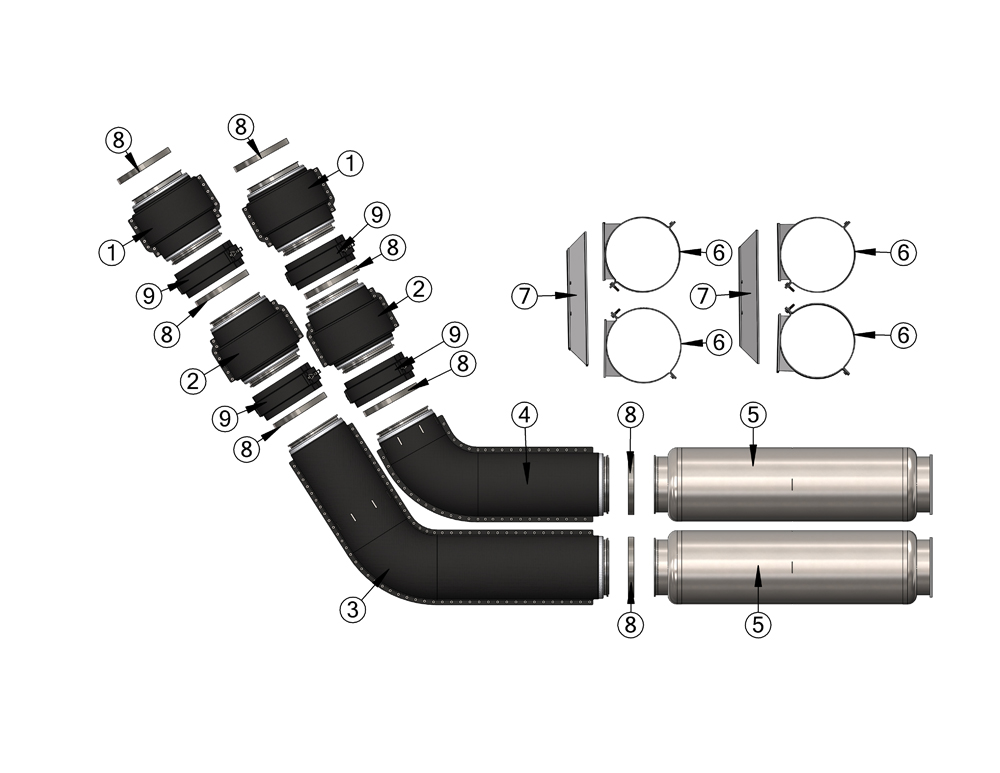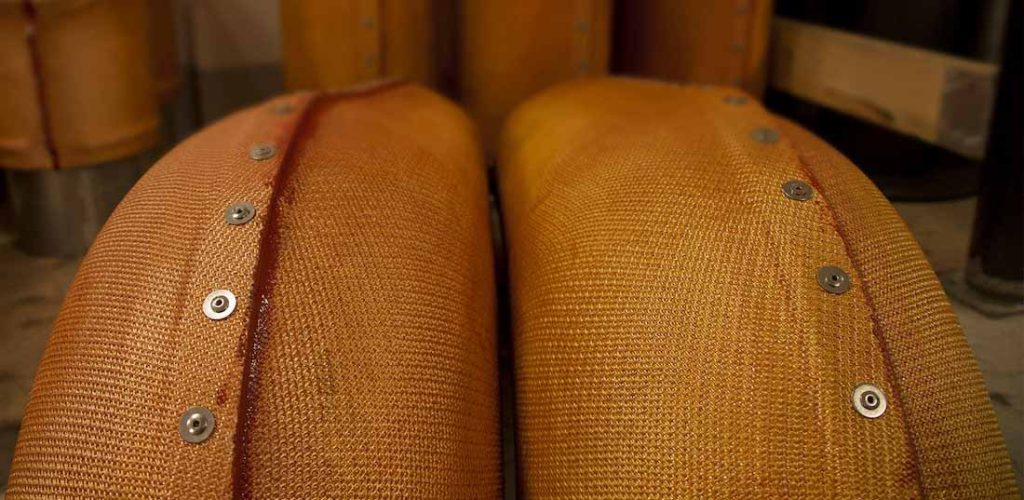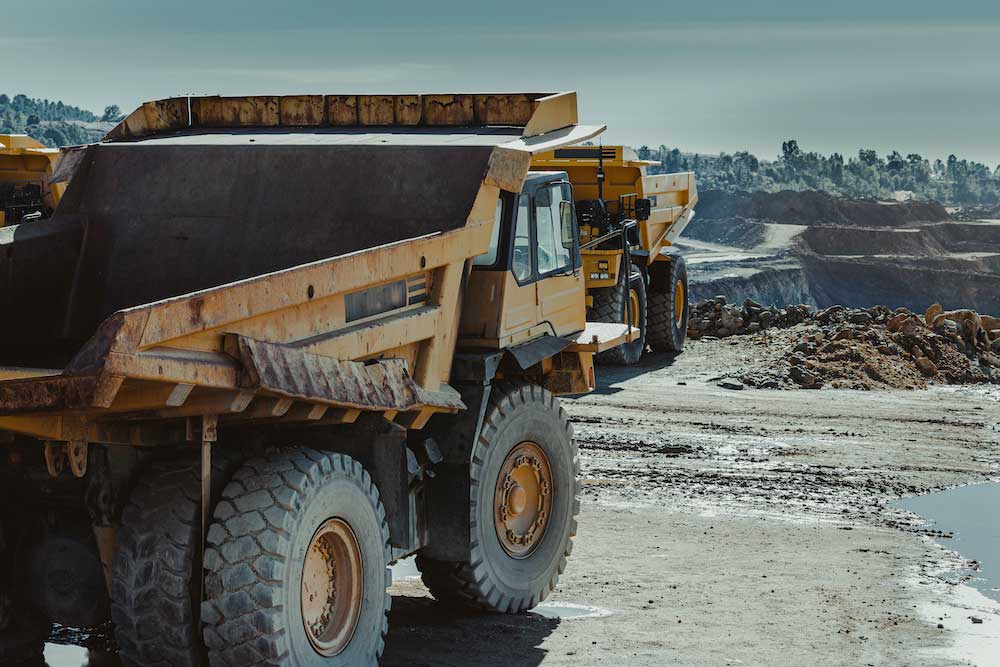How Exhaust Systems Work
In recent years the mining industry has seen significant improvements in technology, particularly in terms of the capacity and operational efficiency of mining trucks. This article will focus on how exhaust systems work, and how they impact a truck’s performance.
Of course, it doesn’t make much sense to talk about mining truck exhaust systems without first touching on the engines. There are many reasons that a full exhaust system is essential, and they all start with the engine. Let us begin, then, with a basic explanation of an engine’s function so that we can understand the role that an exhaust system plays.

A typical mining truck uses a diesel internal combustion engine. This means that the working fluids combust inside the cylinder. This process provides the energy the truck needs to run, but also generates a waste product: a complex mixture of gases and particulates commonly known as exhaust.
Exhaust emissions negatively impact human health and the environment when they are not appropriately discharged. A properly-constructed exhaust system performs a variety of functions, but one of the most important is to filter a truck’s emissions. DBA Silencing has been designing and manufacturing exhaust systems for more than 30 years.
What Is A Full Exhaust System?
A full exhaust system is the complete assembly of all the components that guide the combustion gases discharged by an engine. The various parts of an exhaust system play different roles in the emission process. Depending on the system’s design, one or more of each type of component will be present.

A full exhaust system starts with the manifolds that extract the exhaust gases from the engine cylinder, and ends with the tailpipe. The system may also, depending on the vehicle, include some other exhaust accessories. Generally speaking, the exhaust system is meant to convey toxic gases away from the engine and those operating the truck.
Unlike with most other vehicles, truck exhaust parts are exposed and often end with a vertical pipe. This is particularly true in exhaust systems for logging trucks. When this vertical pipe is present, there is typically a metal flap to prevent debris and rain from falling into the exhaust system. DBA Silencing builds exhaust parts for not only trucks in the mining and logging industries, but also boats such as fishing vessels.
Exhaust systems handle heated fumes and usually become extremely hot over time. On exposed logging truck exhaust parts, hot silencers are sheathed in perforated metal to ensure that people aren’t burned. This sheath is occasionally chrome-plated so it can serve as a decorative feature.
There are a variety of different approaches to keeping exhaust systems from overheating. It’s important to keep the surface temperature of exhaust components below the flash point for operating fluids such as oils because if temperatures are not controlled, truck fires can result. Some designs use double-walled exhaust parts and others incorporate insulating blankets.
DBA Silencing encases exhaust components in heat-resistant fibreglass shells, and this has proven to be an extremely effective solution to the problem of dissipating excess heat. DBA’s proprietary insulating shells work so well that an operator can actually place their bare skin on an exhaust component that’s in use and not suffer any ill effects. The use of DBA parts makes mine sites safer by reducing truck fires and operator injuries, and it is for this reason that some insurance companies insist on the use of DBA systems at properties they’re underwriting. DBA systems are also lighter than their double-walled equivalents, and easier to install than blankets.

What Parts Are Included In An Exhaust System?
To better understand how exhaust systems work, let’s look at the components that make up a typical system. The essential components are the same, and they perform similar functions, regardless of whether we’re talking about a heavy-duty mining truck or a fishing vessel.
- Manifold Or Header
A manifold harnesses the gas from an engine cylinder. Manifolds are often made from cast iron.
- Catalytic Converter
This part of an exhaust system performs the critical job of preventing {or at least reducing} the release of harmful gases into the atmosphere. It achieves this by converting the hydrocarbon, nitrogen oxide, and carbon monoxide produced by the engine into water and carbon dioxide.
Some exhaust systems, known as catless or de-cat systems, don’t have a catalytic converter. However, environmental regulations in many areas do require these units.
- Exhaust Pipe
The individual components of the exhaust system are linked together by pipes. The pipes convey the exhaust gases through the system until they are emitted.
Depending on the design of the exhaust system, some vehicles may have two sets of pipes.
The primary duty of a muffler is to reduce to acceptable standards the noise from a vehicle or vessel. Mufflers are attached to the tailpipe to dampen the sound waves that accompany the exhaust gases being emitted.
- Tailpipe
The tailpipe is the final component in an exhaust system. The tailpipe in mining truck exhaust stacks may have a flap, or be curved at the end to prevent foreign objects from dropping into the exhaust system.
What Are The Different Types Of Exhaust Systems?
There are five different types of exhaust systems.
- Single Exit Exhaust
Single exit is the standard system utilized on most cars and trucks. It is generally the most affordable design to install and maintain.
- Dual Exit Exhaust
This design features two tailpipes. It gives depth to the note, which is why sports cars have a distinctive sound. Unlike other exhaust designs, the dual exit doesn’t bend around the wheels.
- Opposite Dual Exhaust
Opposite dual exhaust makes cars, trucks, and SUVs sound more forceful. Unlike with the dual exit design, opposite dual exhaust systems do loop around the wheels.
- Dual Side Exhaust
The dual side design features two pipes running next to each other. The system works the same way as single exit exhaust but the additional pipe improves efficiency.
- High-Performance Exhaust
As the name implies, this design boasts superior function. High-performance systems purify pollutants and release minimal exhaust gases. They also improve a vehicle’s operation and engine capacity.
How Do Exhaust Systems Impact Mining Truck Operation?
It is often helpful to think of a vehicle’s exhaust component configuration as a respiratory system. Many things go wrong when you can’t inhale or exhale, and shutdown eventually results. Exhaust systems enhance the performance of vehicles by providing a carefully-managed outlet for the combustion process taking place inside the engine.

The features and dimensions of a mining truck exhaust system go a long way when it comes to determining the vehicle’s overall efficiency. DBA Silencing exhaust kits are engineered to provide optimal performance. That said, we can modify any of our systems to meet particular challenges or resolve site-specific issues. We can also create custom systems geared to meet your individual needs and requirements. Feel free to check out our catalogue and call us anytime at 1-800-661-5886.
